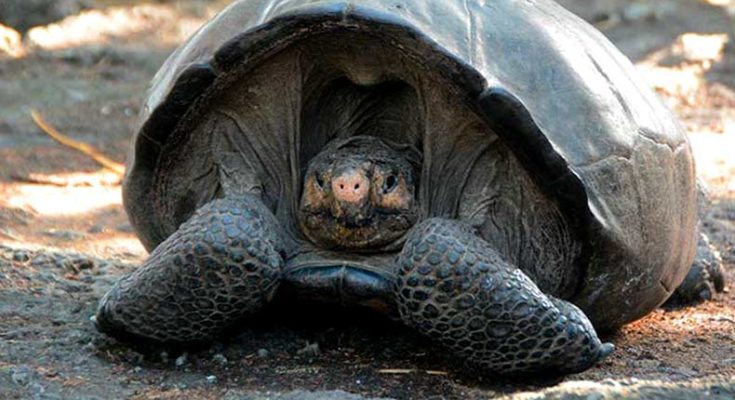Galápagos tortoise – first time marked after 100 years. Image Courtesy – USA Yoday
A giant tortoise has been found on the Galápagos island of Fernandina, Ecuador. The government of Ecuador stated that Chelonoidis phantasticus, an adult female Giant Tortoise, was marked on 17th February, 2019.
This species of the tortoise was last noticed in the year 1906. International Union for Conservation of Nature has already enlisted the species as endangered, and almost extinct. So, more than 100 years have passed since a human being saw a turtle of this species.
The Galápagos tortoise (Chelonoidis niger species complex), also known as the Galápagos giant tortoise, is one of the most iconic animals of the Galápagos Islands. In fact, the islands themselves were named after them, as galápago is an old Spanish word for “tortoise” or “saddle.”
Here are some key facts about this magnificent reptile:
-
Size and Weight: It is the largest living species of tortoise in the world. Large males can weigh over 400 kg (900 lbs) and be up to 1.5 meters (4.9 ft) long.
-
Incredible Lifespan: They are among the longest-lived vertebrates. They commonly live for over 100 years in the wild, and some individuals in captivity have been recorded living up to 175 years.
-
Unique Adaptation: Due to their slow metabolism, they have an amazing ability to survive for up to a year without food or water, an adaptation that unfortunately made them easy prey for passing sailors in centuries past.
-
Shell Shapes: Different subspecies of Galápagos tortoises have evolved distinct shell shapes depending on their island habitat:
-
Domed shells: Found on larger, wetter islands with abundant ground vegetation.
-
Saddle-backed shells: Found on drier islands. The upward curve in the front allows them to stretch their long necks high to reach sparse, elevated vegetation like cactus pads.
-
-
Keystone Species: They play a vital role in their ecosystem by being major herbivores, helping to disperse seeds through their digestive system, and maintaining vegetation levels.
-
Conservation Status: Their population was drastically reduced from over 250,000 to a low of about 15,000 due to human exploitation and introduced invasive species. Today, many subspecies are considered vulnerable or endangered, but intensive conservation and captive breeding programs have helped several populations begin to recover.
Park rangers and biologists made an expedition along 3 miles in area where lava flow got hardened over years. They expected that the tortoise could not settle over there. Ultimately, they could possibly find the tortoise in the area under a stack of bush to shelter itself from the sun.
Read: Honey Bees can solve arithmetic problems better than many human
The giant tortoise has been shifted to the ‘Fausto Llerena Tortoise Breeding Center’ on the Galapagos island of Santa Cruz. Biologists maintained their hope that the animal found, was not the only Fernandina Giant Tortoise residing on the island.
The total venture was completed through a combine effort by the ‘Galápagos National Park Directorate’ and the ‘Giant Tortoise Restoration Initiative’ of USA. The total expedition was a project of the series ‘Extinct or Alive’ by Animal Planet. Funding of this project has been focussed to search a mate for the giant female tortoise to protect it from getting extinct.





